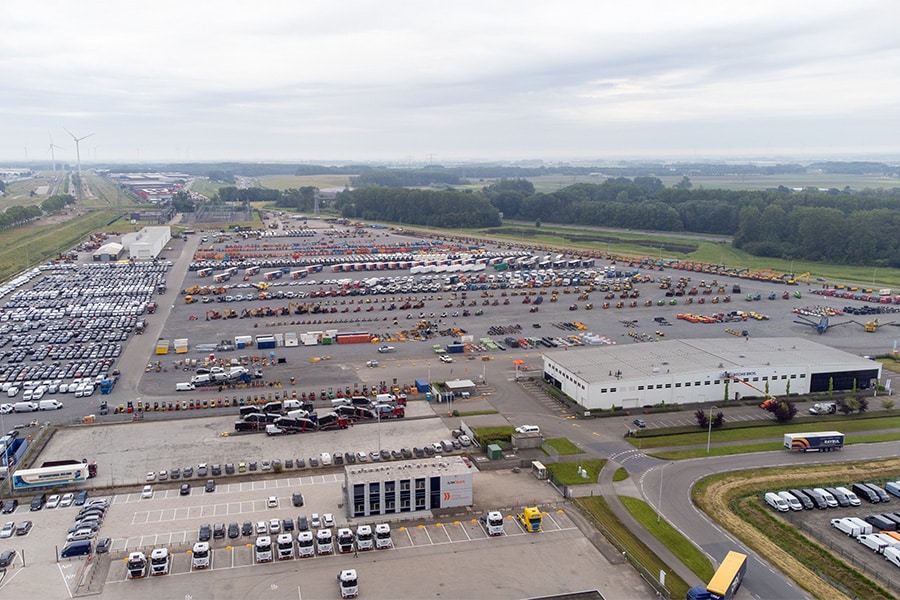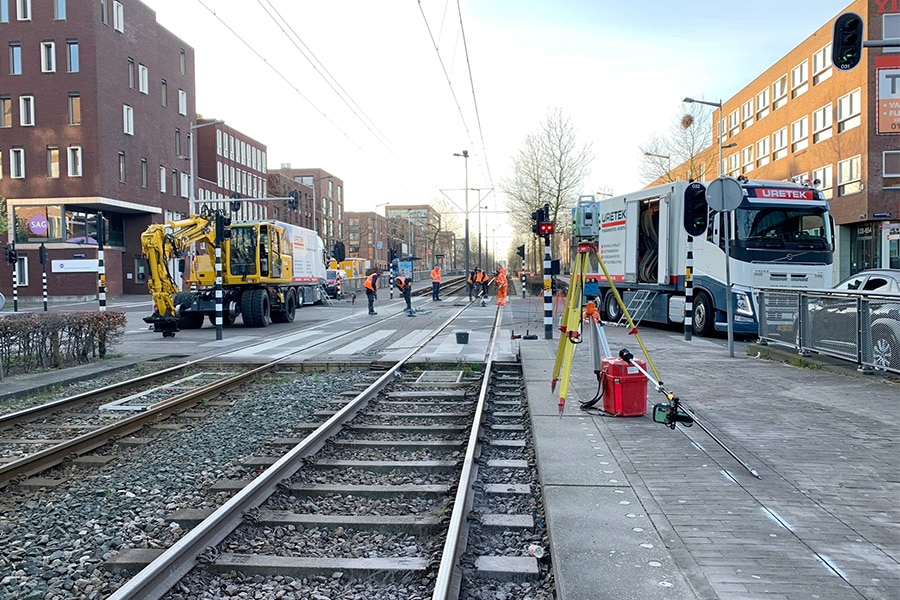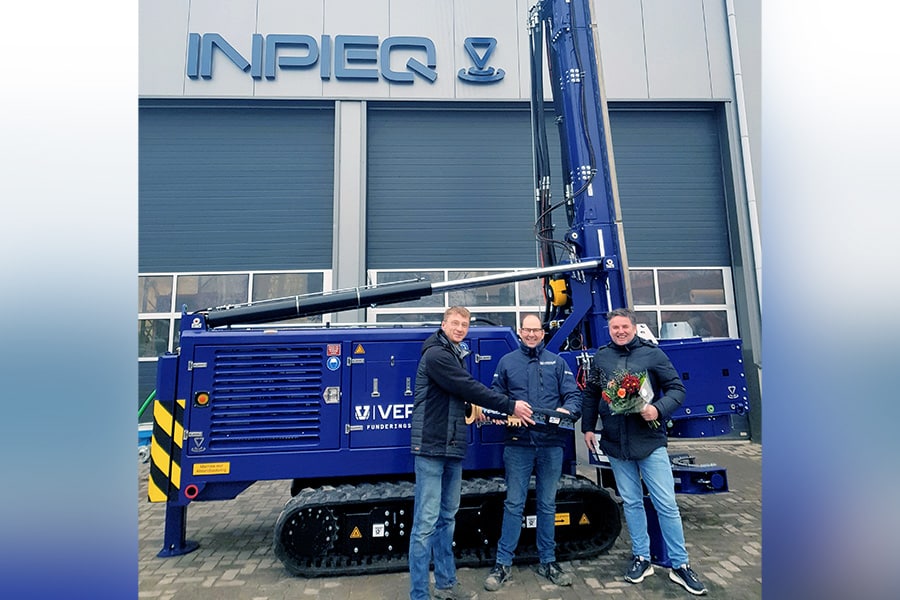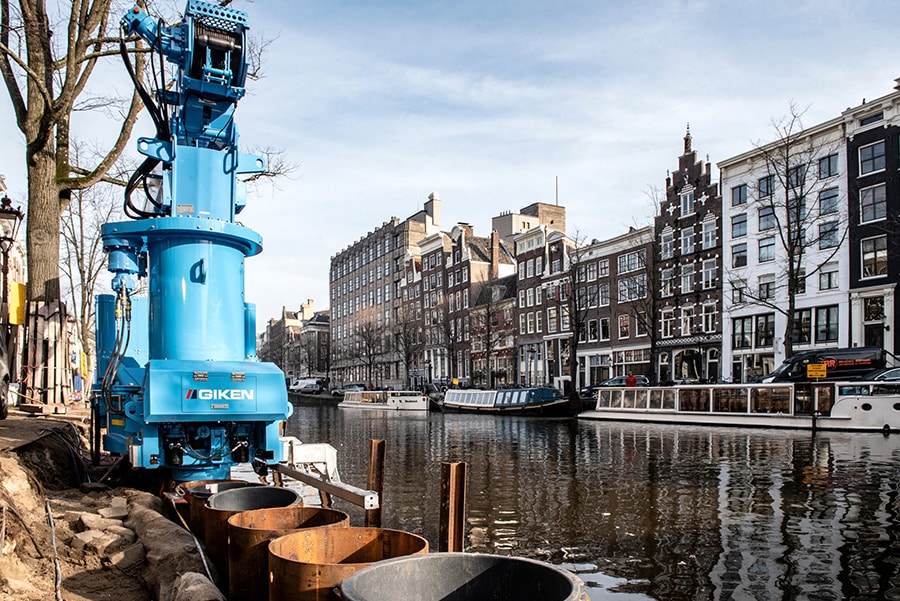
Opera 'The Entrance of Amsterdam'
Especially for GWW magazine, wUrck architects gave their vision of the project, in a striking and special way. wUrck compared the project to the performance of an opera and managed to beautifully portray the work in various acts.
Act 1-A different role
Far-reaching specialization within the various professional disciplines, a different procurement culture and a division of responsibilities has led to a new position of the architect. Unlike in other countries, where the architect is also responsible for structural and installation engineering aspects, in the Netherlands each specialty is placed in a different corner. The role as the overarching figure that the architect once was, the generalist, protagonist who keeps the overview and brings everything together, is over. As you have less responsibility, you also gain less power in the design and construction process. The architect has had to find a new place in the construction world and redefine his role. His role as conductor is over but he is far from being an extra!
Act 2-Multidisciplinary design
The nature of architecture in the 1980s and 1990s changed in favor of integral design. In construction, the retreating government and increasing market forces led to public-private partnerships in which the various design phases are addressed simultaneously. In addition, European tenders and integral development competitions, which are often put on the market on a turnkey basis, demand multidisciplinary design teams.
Act 3-Cooperation
As a result, collaboration in the construction chain has become increasingly important for designers and other consultants. Connecting and collaborating are crucial, both in the analog world and in the digital world, where BIM plays an increasingly central role. Collaboration is most common in the form of construction and design teams. This form of collaboration is also characteristic of the De Entree project in Amsterdam.
Act 4-Synergy
In a (construction) team, everyone plays a role and just as in an orchestra for a good performance the musicians (advisors) and conductor (contractor) must act as one for and work together with the composer as principal and with an ever-increasing involvement of the audience. In an orchestra it is mainly about synergy, the effect of a collaboration between the musicians must be greater than what each of the parties could achieve separately. So the roles must be well defined, the whole thing well managed AND often we all have to fight the clichés as well.

Act 5-Clichés
'The architect only thinks about appearance and wants to make everything beautiful and expensive; besides, he/she does not earn a penny from it themselves.'
"The contractor never makes what was promised in the tender phase and sends out extra work notes for everything.
'The structural engineer is not creative and does not take risks, hourly billing.'
"The installation consultant is never proactive and does as little as possible.
"The principal never makes decisions and always adjusts his assumptions.
Act 6- Played
Breaking this stereotype and understanding and respecting everyone's role is a duty. Long-term cooperation between the various orchestra members, ensuring an aligned group that has experienced previous similar processes, is essential. Continuity of previously involved members during the initiative and/or tender phase in the further development of the plan is a must. One must know the piece inside out in order to play it.
Act 7-Involvement
It is necessary for the designers to remain involved in all phases of the process in order to monitor the original ambitions. It is characteristic of the collaborations between architects and contractors that from a certain stage on, the further elaboration is done by the contractor and/or the engineering firm. This weakens the position of the architect and leads to frustrations and loss of quality.
Act 8-Mandate
The commitment to quality from contractor Max Bögl & Partners and the City of Amsterdam led to the architect being given a clear mandate and acting as supervisor for the architectural components.
Act 8-Counterpartner
The client's commitment to quality is further reinforced by the appointment of a counter partner for the architect within the municipality. A closely involved supervisor (architect Simon Sprietsma) for public space, who speaks the same language as the architect wUrck, supports and assesses the design choices. A kind of personalized welstand, who acts as quality controller together with the architect. As a result, important design decisions were made faster and the project improved.
Act 9-Repetition
Performance does not arise naturally by performing the piece only at the end. The preparation prior to the performance of the piece requires rehearsals; only then can you achieve a good performance together. You have to make mistakes and not attack each other, but learn from them. Because it has to be improved and adjusted. We therefore work with workshops and clash sessions in the 3D BIM model, within which everything comes together and we learn from each other's mistakes.
Act 10- Try-out
For project The Entrance we work with a 'libretto' (handbook) of the municipality, but where necessary we make well-founded deviations. As a try-out, we make variants and even mock-ups (test pieces) that we evaluate together and from which we learn and in which we improve the design again so that we do not encounter any surprises during execution.
Act 11-Final
For The Entrance, have we been able to largely adjust stereotypes and clichés? We may not get the answer until we have listened to the opera in its entirety. But at least we hope we didn't cheat.
Opera: 'The Entrance of Amsterdam'
Composition: Amsterdam municipality sets the tone
Conductor: Max Bögl & Partners
Piano: wUrck
Brass players: IV-infra
Woodwind: Geo-2
Percussionists: Installation Technique Louwer
Concertmaster: City of Amsterdam project management
First fiddle: Supervisors
Audience: Residents of Amsterdam and visitors from around the world
Oriol Casas Cancer: Architect-partner wUrck
Paul Kersten: Landscape architect-partner wUrck



